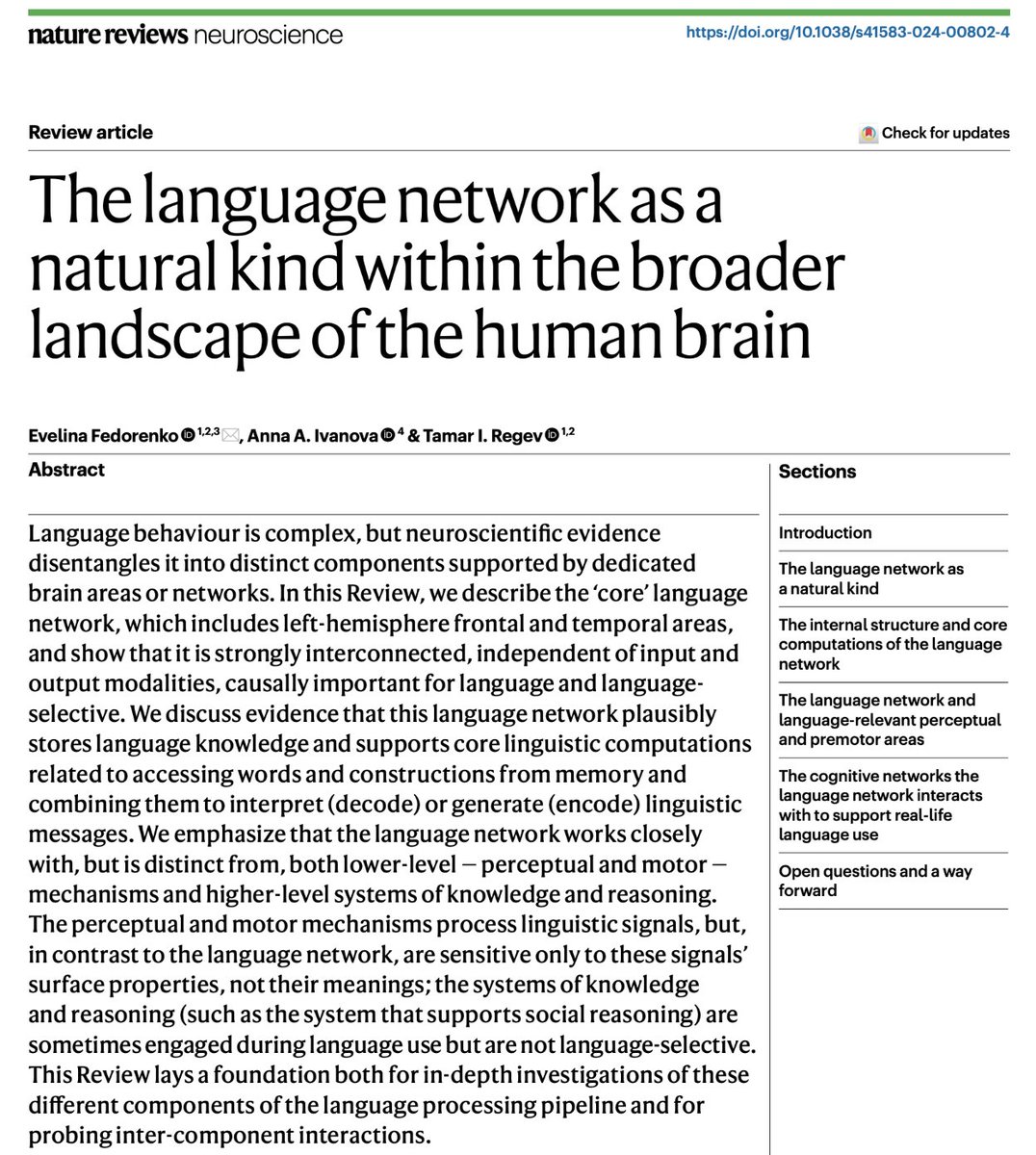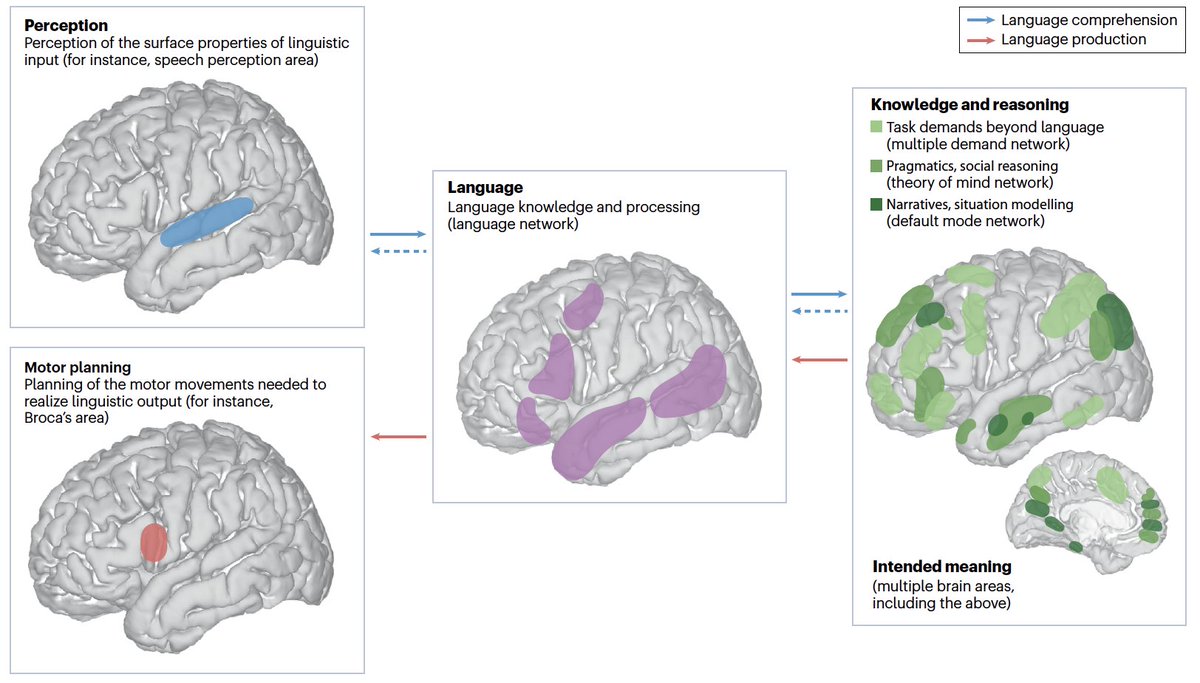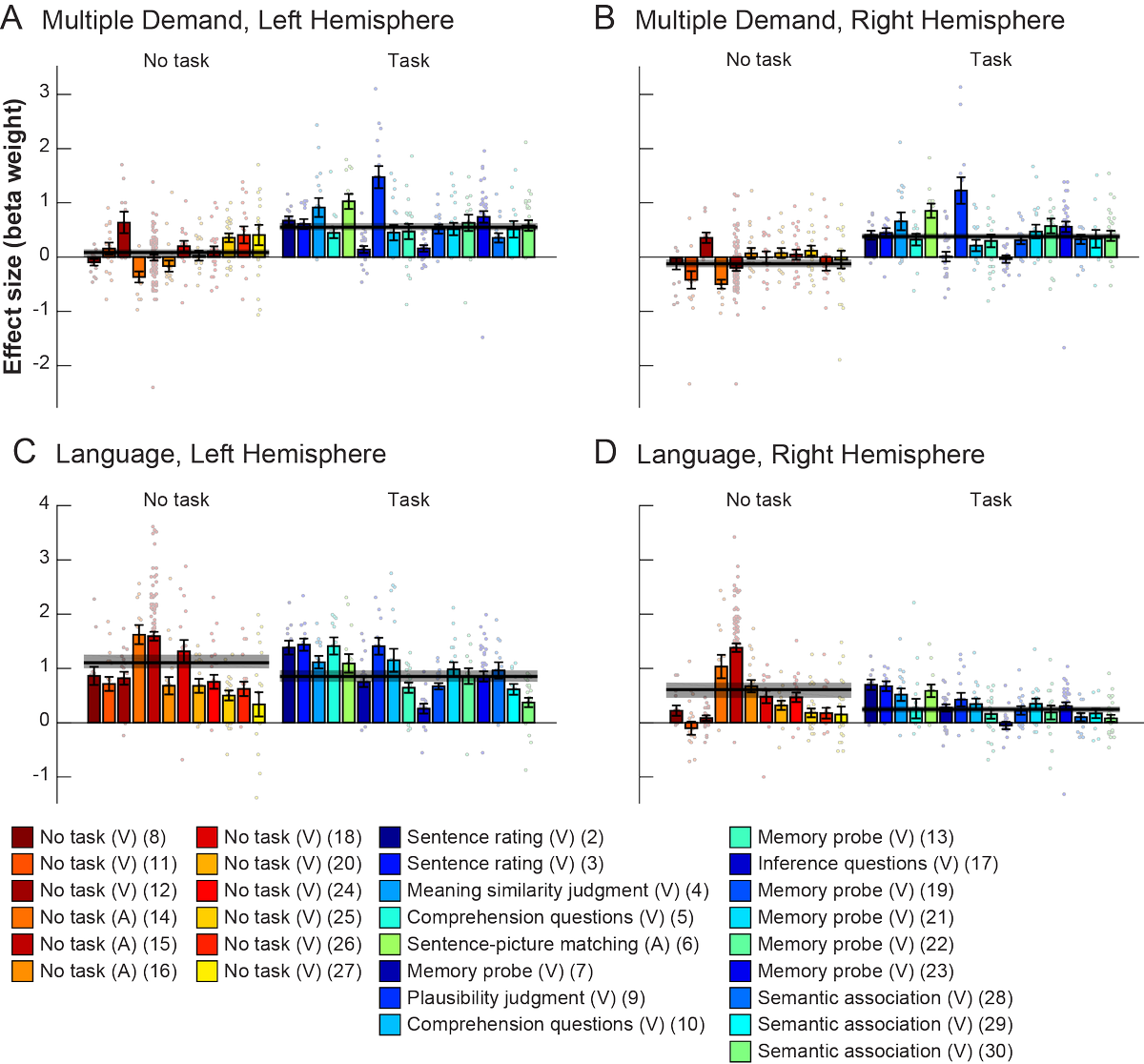
I study language using tools from cognitive science and neuroscience. I also like snuggles.
@evfedorenko.bsky.social
2 subscribers
How to get URL link on X (Twitter) App



 TLDR: The🧠language network is distinct from i)perceptual+premotor lang-relev. mechanisms (eg,speech perception+Broca’s articulation areas)—selective for ling inputs/outputs but insensitive to meaning; and ii)systems of thought—important for language use but not lang-specific.2/n
TLDR: The🧠language network is distinct from i)perceptual+premotor lang-relev. mechanisms (eg,speech perception+Broca’s articulation areas)—selective for ling inputs/outputs but insensitive to meaning; and ii)systems of thought—important for language use but not lang-specific.2/n 

https://twitter.com/JamieReilly_cog/status/1639643481210515456vWFA: It is not debated that in most proficient readers a highly specialized region exists on the bottom of the left ventral temporal lobe that responds to printed words and letter strings (not differentially). First evidence of robust response selectivity came from







 The effort was co-led by the awesome @saima_mm and Dima Ayyash, with help from @Jeanne1Gallee (who laid the critical foundation for this project back in 2015) @AffourtitJosef MalteHoffman @ZachMineroff and @OlessiaJour along with many others (see our long Acknowledgments!). 2/n
The effort was co-led by the awesome @saima_mm and Dima Ayyash, with help from @Jeanne1Gallee (who laid the critical foundation for this project back in 2015) @AffourtitJosef MalteHoffman @ZachMineroff and @OlessiaJour along with many others (see our long Acknowledgments!). 2/n



 Perceptual and motor foundations of language and introduction to high-level language processing:
Perceptual and motor foundations of language and introduction to high-level language processing: 

 As with most cases of early brain damage, she had no linguistic or cognitive deficits, but brains like EG's (fake initials) are invaluable for understanding how cognitive functions reorganize in the tissue that remains. I told her we definitely want to study her brain. 2/n
As with most cases of early brain damage, she had no linguistic or cognitive deficits, but brains like EG's (fake initials) are invaluable for understanding how cognitive functions reorganize in the tissue that remains. I told her we definitely want to study her brain. 2/n
https://twitter.com/wmatchin/status/1311803481217523717The latter is most relevant to your question: because lang areas in both frontal and temporal cortex lay adjacent to numerous functionally distinct areas, and precisely because lesions do not respect functional boundaries, any given lesion is likely to affect multiple areas. 2/n
https://twitter.com/OlessiaJour/status/1306240239170711557#1: use of group analyses (=> Apparent reduction in activity in some brain areas in ASD at the group level may simply reflect higher variability in the locations of the functional regions)
https://twitter.com/LanguageMIT/status/1303393597241405440This paper releases the audio recordings, the SPR data, and some annotations. We also have eye-tracking data (with @tmalsburg and @roger_p_levy) and a bunch of fMRI data, all to be released soon.

https://twitter.com/OlessiaJour/status/1296904145807515650Population: 17 polyglots, all native speakers of English; median number of langs spoken with some level of proficiency =7 (mean =13.9, range: 5–55!). 9/17 polyglots qualified as “hyper-polyglots,” having some knowledge of 10 or more languages (Erard, 2012).
